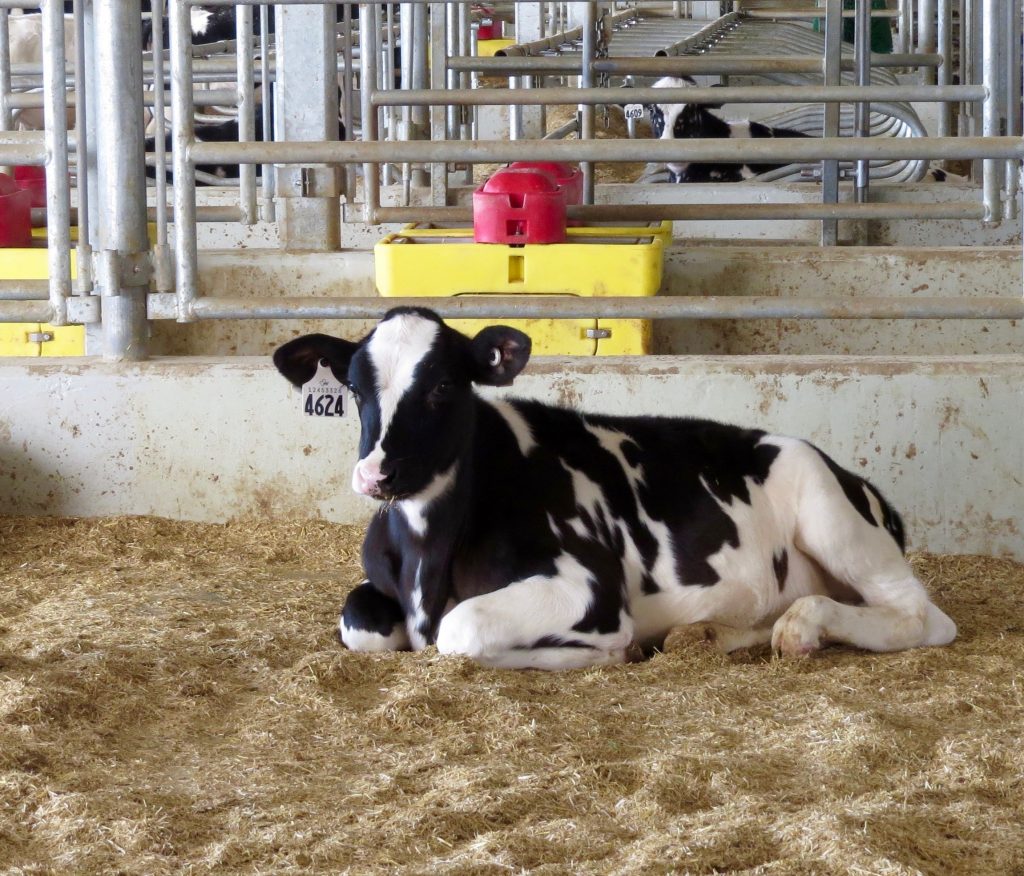Daily water needs for calves depend on many factors including age, diet, environmental temperature, and health status. Proper hydration enhances rumen development, enzymatic activity, and absorption of nutrients from feed. Calves with an insufficient supply of water will limit their solid feed intake. While it is typically assumed that calves get enough hydration from their milk/milk replacer and do not need water during the first days of life, studies show milk replacer is not a sufficient water source for young calves.
A 2018 study by Wickramasinghe et. al. reported that newborn calves drank about 0.75 litres/day (L/d) of water during the first 16 days of life. After day 17, calves were drinking about 0.82 L/d. Once calves were fully weaned (49 days of age), they consumed about 5.3 L of water daily. Older calves around 180 kg can also drink up to 30 litres of water daily, making monitoring water quality parameters and ensuring water is available essential for calves of all ages.
Experts recommend offering calves water free-choice; at minimum they must have access to enough water to maintain normal hydration and health, while taking into consideration factors such as environmental temperature. In warmer months, monitor consumption and offer more water if needed; a temperature change from 20 to 30⁰C increases water intake by one litre daily, with much greater increases past 32⁰C.
Dehydration can also happen quickly. During periods of water loss, (e.g. scours, hot, humid weather) or water restriction, reductions in body fluid negatively impacts metabolism and feed intake. Even mild dehydration reduces metabolic efficiency and impairs the calf’s ability to regulate body heat. Offering cold water may also discourage intake, especially in young calves. Aim for water temperature around 10 to 20°C to encourage consistent consumption.
Watering equipment must also be in good repair, functional, and free of manure and mold. Ensure water troughs are easily accessible and placed strategically within calf housing areas.
It is very important that water is safe and palatable not only for the animals but for the safety of family and employees. Water needs to be free of contamination and have appropriate levels of chemicals and minerals. Regular testing ensures ongoing safety and helps detect any changes promptly.
Water quality must be tested annually, and experts recommend testing in the spring and fall. If the results of the water quality test indicate contamination, it may be prudent to repeat the test. If the second test is positive, consult a water quality specialist at the Canadian Water Quality Association https://www.cwqa.com in order to determine the best way to the address water quality issues, especially if it is the same well for the house and barn.
Water quality can be impacted by the source of the water. Testing should be done whether it comes from a drilled well, a municipal source, or surface water. Drilled wells greater than 24 metres usually provide good quality water. Shallow dug or bored wells are more prone to ground water contamination and higher nitrate levels. Municipal source water is usually tested for chemicals and bacteria by the municipality according to the provincial regulations. Surface water is another viable water source option, however when surface water from ponds, lakes and streams is used, water treatment is necessary to ensure high-quality water is offered to calves.
Water with a high pH level (alkaline) impacts the effectiveness of chlorination as well as other disinfectants. It is also important to note that some water-soluble medications are also affected by a high-water pH causing them not to go into suspension. Similarly, water-soluble medications and some disinfectants in an acidic environment (low pH) have reduced effectiveness. Milk replacers dissolve the best in neutral pH of about 7.2.
Calves drink a significant amount of water as early as one day of age. Water intake can translate into improved growth performance before and after weaning by enhancing rumen development and nutrient utilization efficiency. After weaning, water intake increases along with starter intake. Providing calves with access to fresh water from the first day of life is one of the easiest and cheapest management practices to encourage calf growth.
